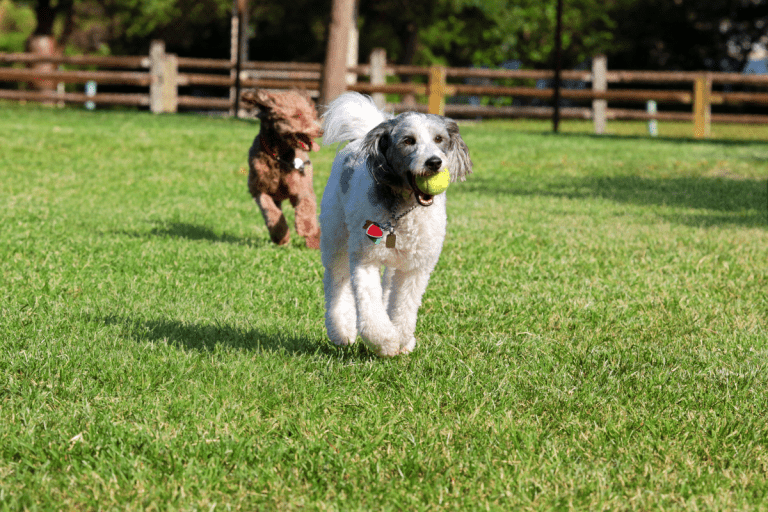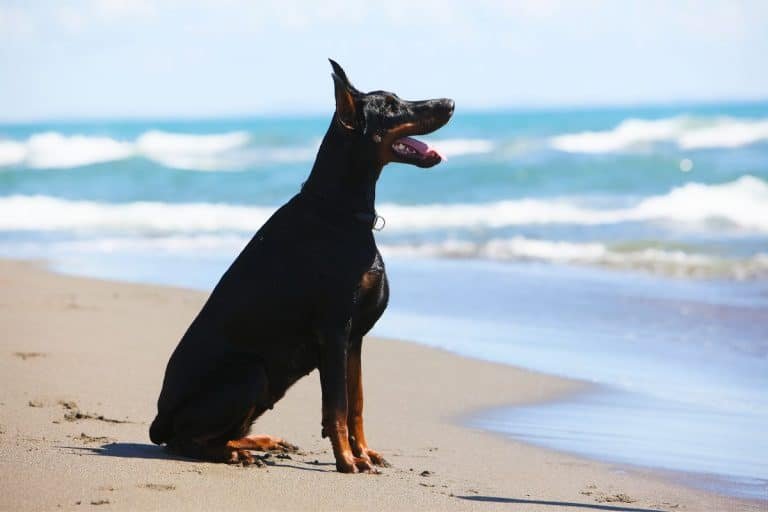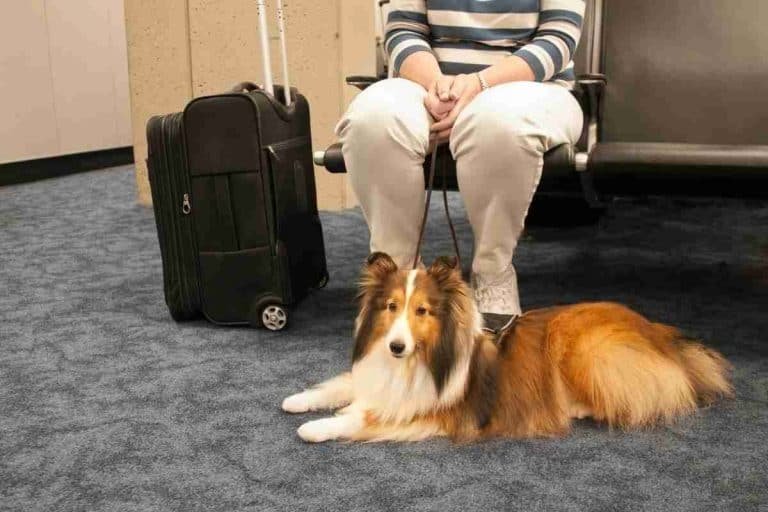Can Morkies Swim? Do They Like Water and How to Teach Them Safely
Last Updated on September 18, 2025
Can Morkies swim? Many manage a dog‑paddle, but stamina and buoyancy vary. Small bodies, short legs, and wet coats limit endurance. Safety comes first: owners supervise closely, choose calm, shallow water, and fit a snug life jacket.
Do they like water and how to teach them safely? This post outlines age and health checks and confidence‑building steps. It covers pool, lake, and ocean rules, gear fit, ear care, and aftercare. It also lists stress signals, when to stop, and low‑risk alternatives like kiddie pools and splash play.
Quick answer: can Morkies swim?
Morkies can often dog-paddle well enough to stay afloat for short periods. Their small size and mixed heritage mean swimming ability varies. Many learn to paddle instinctively, but few are strong long-distance swimmers.
Safety matters more than ability. Owners must supervise every swim, limit session length, and avoid deep water, strong currents, and cold temperatures. A properly fitted canine life jacket reduces drowning risk and helps a Morkie conserve energy while learning.
Shallow pools and calm, controlled areas work best for introductions. For home practice, owners can use a small, sturdy pool designed for dogs. See options for safe backyard water play at 10 refreshing puncture-proof dog pools. If a Morkie shows panic, chronic fatigue, or difficulty breathing, remove it from the water and seek veterinary advice.
Typical swimming ability of the breed
Morkies combine traits from the Maltese and Yorkshire Terrier. Both parent breeds are toy types with compact bodies. That build gives many Morkies reasonable buoyancy, but short legs and dense coats limit propulsion and endurance.
Most Morkies manage a basic doggy paddle but tire quicker than larger breeds. Their coats can become heavy when saturated, increasing the effort needed to stay afloat. Puppies learn quickly, but small size means even brief swims can be exhausting.
Begin training in waist‑deep, calm water. Keep sessions short, under five to ten minutes at first. Use positive reinforcement and treats to encourage a relaxed stroke. For comparison on how other small breeds handle water, owners can read about similar small-breed swimming tendencies at can shih tzus swim. Always rinse the coat after freshwater or pool use to remove chlorine and debris.
Why individual Morkies differ (parent traits and temperament)
Individual differences in Morkie swimmers come down to genetics, body shape, and personality. A Morkie with a more Maltese-like body may float better. One leaning toward Yorkie proportions might show less natural buoyancy. Tail length and chest depth also affect balance and propulsion.
Temperament plays a big role. Bold, curious dogs accept water quickly. Anxious or timid dogs resist and may panic. Early, gentle exposure builds confidence. Positive, reward-based introductions reduce fear and improve skill.
Health and conditioning matter too. Respiratory issues, weak muscles, or ear problems can reduce comfort in water. Protect ears and watch for infections after swimming; owners can learn more about ear care and protection at dog ear plugs for swimming. When in doubt, consult a veterinarian before starting regular water activity.
Physical traits that influence a Morkie’s swimming
Morkies combine toy-size proportions with Terrier and Yorkshire traits. Those physical features shape how they move and how safe they stay in water. Owners should assess size, coat and tail mechanics before introducing any water activity.
Size, stamina and short legs
Morkies usually weigh under 10 pounds and have short legs. Small bodies offer less natural buoyancy and a faster heat loss in cool water. Short limbs reduce stroke length, so paddling becomes energy-intensive. Sessions must stay brief and supervised. Swimming fatigue can set in quickly, so plan frequent rest and exit points.
Coat type, wet-weight and buoyancy
Coats range from fine, silky hair to denser mixes. Longer, unconditioned hair soaks and increases wet-weight, lowering buoyancy and tiring the dog sooner. Regular grooming and trimming around the belly helps. For protection and added floatation, owners can consider waterproof dog coats with underbelly protection. Towels and a warm, dry place after swimming reduce chill and skin issues.
Tail, paws and balance in water
The tail acts as a rudder and helps steering. A short or docked tail limits directional control. Paw shape and slight webbing determine propulsion; well-trimmed fur around the feet reduces drag. A snug canine life jacket with a handle aids balance and lets caregivers guide and lift a Morkie safely. Consider a flotation trial in shallow, calm water before moving to deeper areas.
How to recognize if your Morkie enjoys water
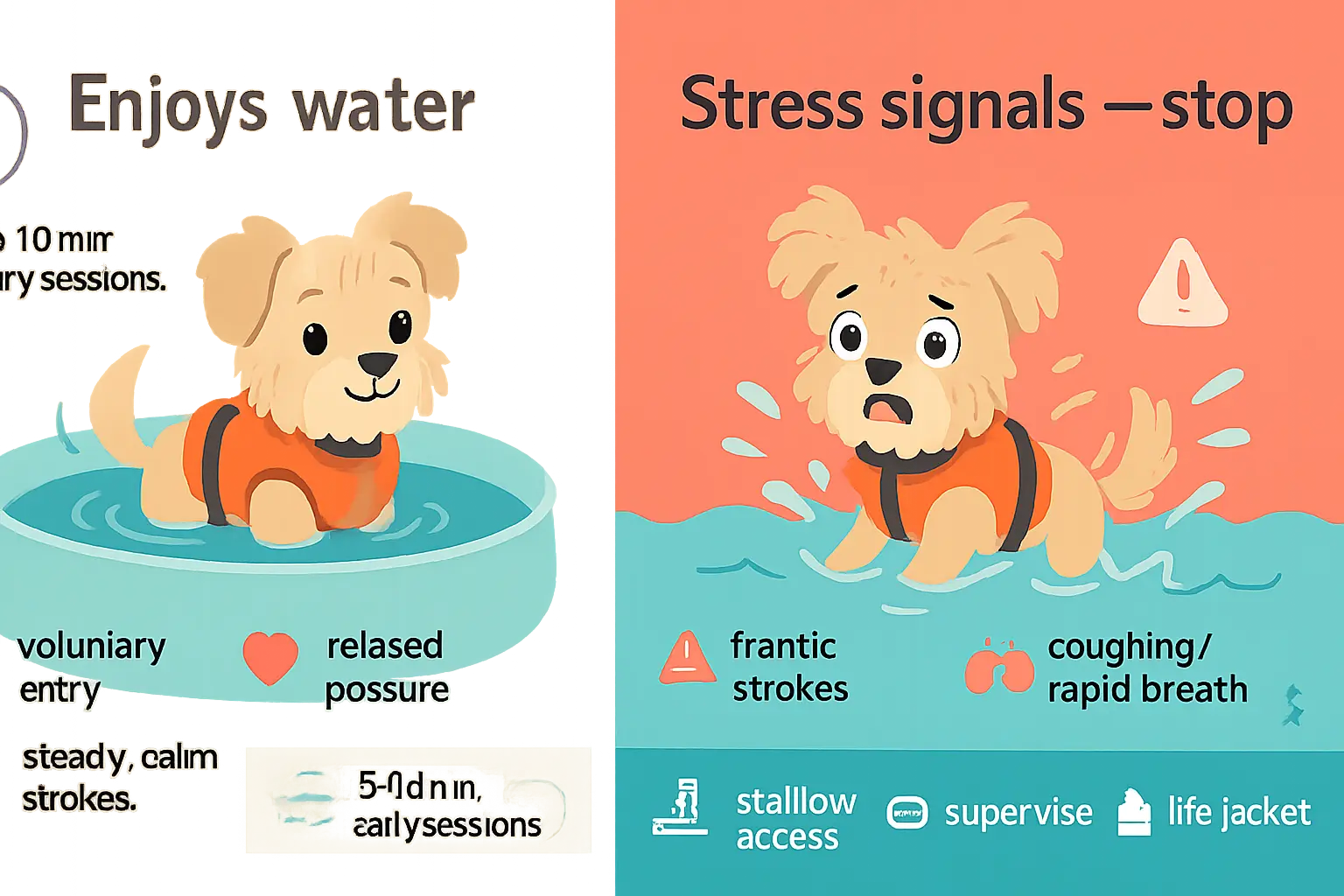
Morkies vary widely in how they react to water. Some show natural curiosity, while others prefer dry ground. Owners should watch body language and short test swims before assuming a Morkie likes water. A confident Morkie will approach shallow water, sniff and enter slowly. Consider small, shallow options such as a kiddie pool or a soft-sided dog pool for early sessions — they permit gradual exposure without deep water. A good resource for safe, shallow options is 10 refreshing puncture-proof dog pools.
Positive behaviors that show comfort and interest
A Morkie that enjoys water will display relaxed, playful behavior. Look for a loose wagging tail, playful splashing, and voluntary entries into shallow water. Calm paddling without frantic leg motion indicates effective swimming technique. The dog may bring toys or make short, repeated trips between water and shore. Ears and face stay relaxed, and breathing stays steady. Small bursts of excitement followed by quick rests are normal for this small breed. Owners should reinforce these behaviors with praise and gentle treats, and always provide a life jacket for extra buoyancy during longer sessions.
Signs of fear, stress or fatigue to stop immediately
Stop a session at the first sign of distress. Indicators include frantic, high-legged paddling, a tucked tail, wide eyes, trembling, and continuous whining. Rapid or shallow breathing, coughing, or swallowing water suggests inhalation risk. Slower, uneven strokes or sinking rear quarters show fatigue. Remove the Morkie calmly, dry and warm it, and offer water and rest. If coughing, persistent lethargy, or difficulty breathing follow, seek veterinary care. Short, controlled exposures and prompt removal at the first sign of trouble keep water experiences positive and safe.
When and how to introduce your Morkie to water
The question “Can Morkies Swim? Do They Like Water and How to Teach Them Safely” guides how owners approach a first swim. Morkies often enjoy splashing, but their small size and coat type require careful planning. Owners should choose calm, warm water and short sessions to build confidence.
Best age and health checks before first swim
Puppies should wait until at least 12–16 weeks and after their initial vaccinations. A vet should clear dogs with respiratory, joint, or heart issues before any swimming attempts. Check for skin conditions, ear infections, and a normal body temperature. Use a simple checklist: vaccinated status, clear ears, no recent surgery, and steady walking on leash. If any doubt exists, consult a veterinarian.
Gradual step-by-step introduction (shallow to deeper)
Start in ankle-deep water so the Morkie can stand and feel secure. Let the dog explore at its own pace, using toys and treats as motivation. Move to waist-deep water only when the dog paddles confidently and shows no signs of panic. Keep early sessions to five minutes and increase time slowly. Portable kiddie pools provide a controlled environment for early practice; owners can compare options at 10 refreshing puncture-proof dog pools.
Training tips: positive reinforcement and handling common setbacks
Use high-value treats and calm praise immediately after successful paddling. Avoid forcing the dog into water; that increases fear. If a Morkie freezes or tries to escape, step back to shallower water and reward small wins. Consider a properly fitted canine life jacket for sessions near open water. For persistent fear, break training into shorter, more frequent sessions and consult a professional trainer. Owners should always dry the ears and coat after swimming to prevent infections.
Safety essentials and recommended gear
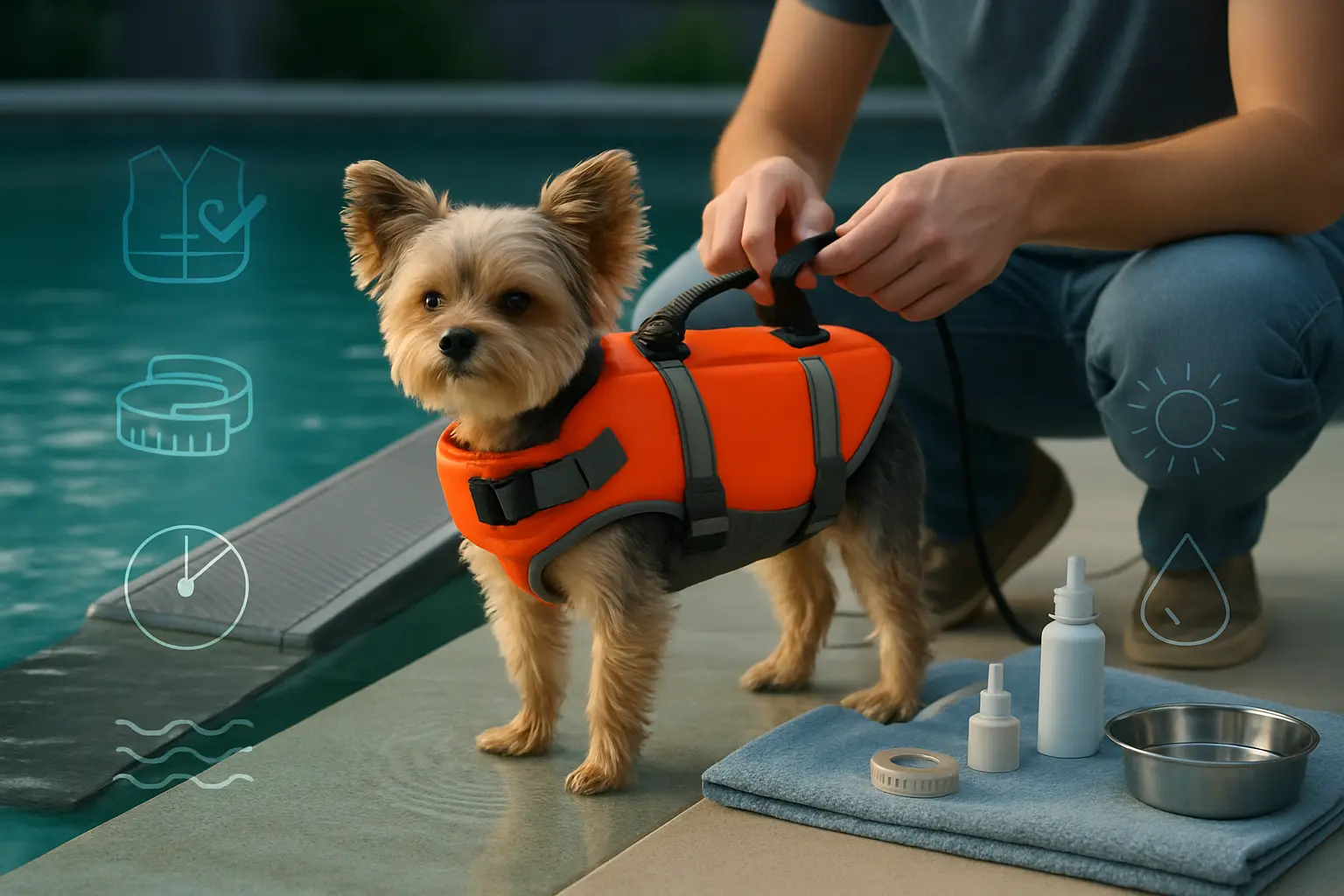
Morkie owners should prioritize safety gear and rules before any water introduction. Small size, coat type, and stamina affect buoyancy and endurance. Proper equipment reduces risk and builds confidence during early swims.
Choosing and fitting a canine life vest for small dogs
Pick a vest designed specifically for toy and small-breed dogs. Look for a snug fit around the chest and belly with adjustable straps and a relief cut for the legs. A handle on the back matters; it allows a quick lift from water or a boat. Check fit by lifting gently with the handle—if the dog slips, tighten straps or try a different model. Reflective panels and bright colors increase visibility. Replace vests that float lopsided or show compressed foam. Owners should measure neck, chest, and length and follow the manufacturer’s sizing chart rather than guessing.
Supervision, safe exit points and pool/lake rules
Never leave a Morkie unattended near water. Assign one person to supervise during every swim session. Identify and practice using exit points before entering water: shallow steps, gradual slopes, or a ramp work best for small dogs. At lakes, avoid steep banks and keep the dog on a short leash until it navigates the shoreline safely. Follow local rules about dogs at public pools and beaches. For ideas on keeping ears safe and comfortable while swimming, see dog ear plugs for swimming. Always rinse a Morkie after swimming and dry ears thoroughly to prevent infections.
Differences for pools, lakes, and ocean (currents, algae, salt)
Pool water is calm but chemically treated; rinse to remove chlorine. Lakes can hide sudden drop-offs, strong undercurrents, and blue-green algae, which can harm dogs. The ocean adds tides, waves, and salt that irritates skin and eyes; salt also dehydrates quickly. Avoid swimming in murky water or where algae blooms appear. In moving water, keep the dog close and use a life vest rated for active, choppy conditions. Limit swim time for Morkies and watch for fatigue, coughing, or disorientation. If any sign of trouble appears, exit water immediately and dry and warm the dog.
Health risks, cleaning and aftercare after swimming
The following sections cover common health risks Morkies face after swimming and practical aftercare steps owners should follow. Routine cleaning, careful monitoring and prompt response to warning signs reduce complications. As small dogs with floppy ears and a dense coat, Morkies need targeted attention to prevent infections and to recover safely after water exposure.
Preventing and treating ear and skin problems
Morkies with floppy ears trap moisture, increasing the risk of otitis externa. After each swim, gently wipe the outer ear with a soft, absorbent cloth and avoid inserting cotton buds. If owners want added protection during swims, consider protective gear such as dog ear plugs for swimming. Watch for head shaking, odor, redness or discharge—these indicate infection. For mild irritation, cleanse the ear with a vet-approved solution and dry thoroughly. For persistent symptoms, seek veterinary diagnosis and topical or oral treatment. For skin, rinse away chlorine or salt and inspect for redness, flaking or hotspots. Early topical treatment prevents spread.
Managing exhaustion, hypothermia and water ingestion
Small dogs tire quickly in water. Limit sessions to a few minutes, and always supervise. Use a canine life jacket for open water to reduce fatigue and swallowing of water. Signs of exhaustion include heavy panting, stumbling and slow paddling; remove the dog immediately and warm with towels. Cold, shivering or lethargy suggests hypothermia—wrap in blankets and contact a vet if symptoms persist. If a Morkie ingests substantial water or shows coughing, vomiting, or breathing changes, seek veterinary care promptly to rule out aspiration pneumonia.
Grooming and drying tips to protect coat and skin
Rinse the coat with fresh water after swimming to remove irritants. Apply a mild, dog-specific shampoo only when needed to avoid stripping natural oils. Towel dry thoroughly, then use a low-heat blow dryer while brushing to prevent mats and trapped moisture. Pay special attention to the belly, armpits and ear folds. Trim hair around ear canals and paw pads to improve airflow and drying. If recurring dampness causes skin problems, adjust swim frequency or consult a groomer or veterinarian for coat management. If infection or severe matting occurs, schedule professional grooming and veterinary assessment.
Alternatives to full swims and ways to keep them active in water
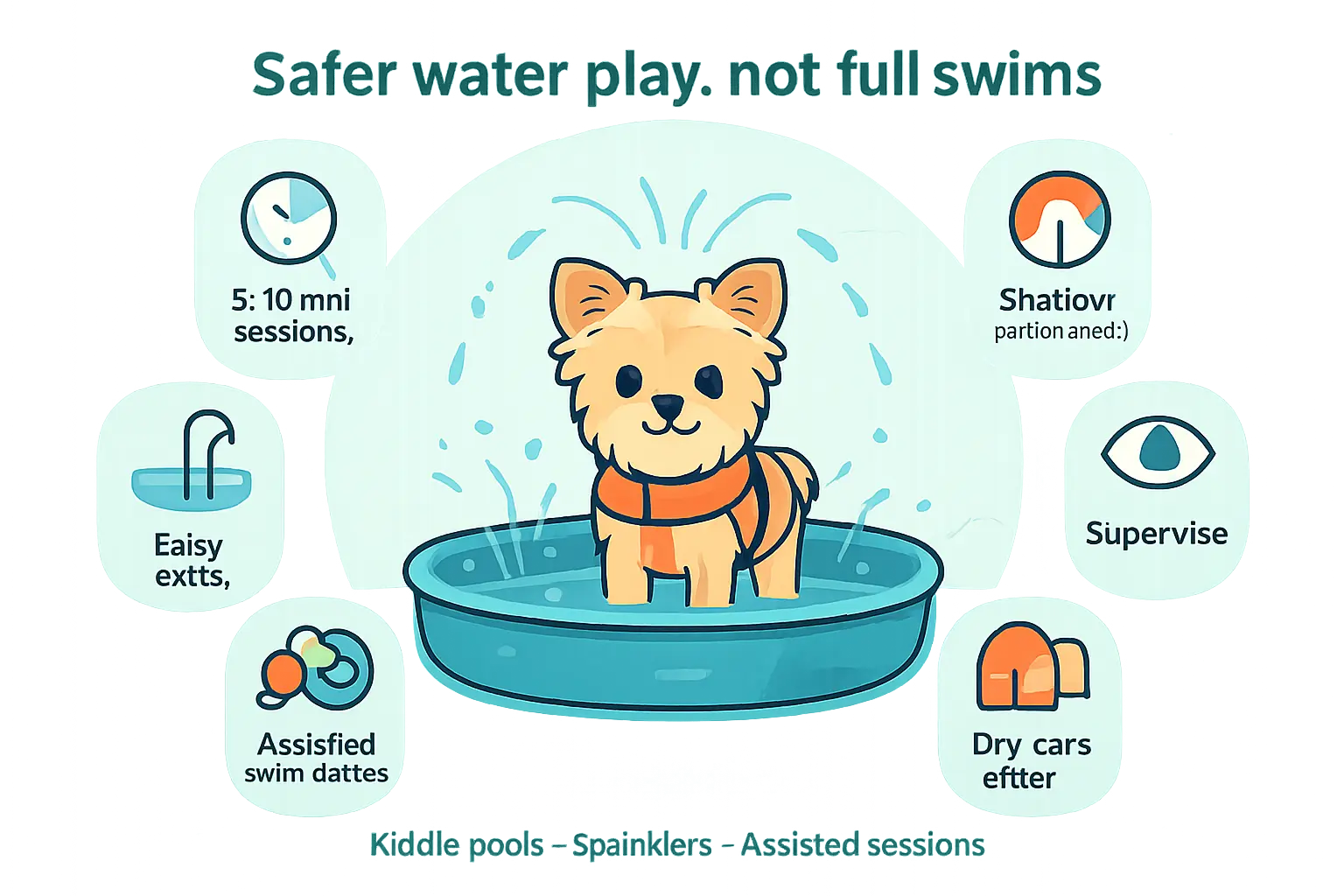
Not every Morkie benefits from full swims. Small size, coat type and confidence affect comfort in deep water. Owners can offer several low-risk options that provide exercise, cooling and enrichment without immersion. Short sessions, protective gear and consistent supervision make water activity safe and fun. When drying and warming are concerns after play, consider protective outerwear designed for wet dogs like those reviewed in waterproof dog coats with underbelly protection.
Shallow splash play, kiddie pools and sprinklers
Shallow splash play suits most Morkies. A small kiddie pool lets a dog stand and paddle without fighting buoyancy. Place the pool on non-slip ground and keep water below chest level. Rotate short play sessions—five to ten minutes—for puppies or anxious dogs. Use toys and treats to encourage gentle exploration, not pressure. Warm water on cool days prevents chilling. For owners shopping for safe pool options, see curated choices in 10 refreshing puncture-proof dog pools.
Professional dog swim classes and assisted swimming options
When a Morkie needs structured training or therapy, professional classes help. Trained instructors introduce steps: flotation devices, leash guidance and gradual water depth increases. Assisted swimming—using a sling or support—helps dogs with mobility limits. Bring ear protection and appropriate flotation; owners can learn about swim-appropriate gear like dog ear plugs for swimming. Always consult a veterinarian before aquatic therapy. Book a class with certified trainers when seeking rehabilitation or confidence-building work.
Common owner questions answered
Owners often ask Can Morkies Swim? Do They Like Water and How to Teach Them Safely and expect a simple yes-or-no. The answer depends on the individual dog. Morkies usually inherit a natural doggy-paddle from both parent breeds but their small size, coat type, and limb length affect buoyancy and stamina.
Start with short, supervised sessions in shallow water. Fit a properly sized canine life jacket to support the chest and keep the head above water. Teach entry and exit points first, then encourage calm paddling with gentle praise and treats. Avoid forcing a dog into deep water; stress reduces learning and increases injury risk.
After any swim, dry the ears and undercoat thoroughly to lower infection risk. Rinse salt or chlorine from the coat to prevent skin irritation. For owners who want a contained, low-risk option, portable pools designed for dogs offer shallow controlled water that helps with training. See options for safe dog pools at 10 refreshing puncture-proof dog pools. A veterinarian’s okay should precede regular swims for puppies, seniors, or dogs with heart or respiratory conditions.
Can Morkies swim in salt water or chlorinated pools?
Both salt water and chlorinated pools pose trade-offs. Salt water can dry the skin and irritate eyes if left on the coat. Chlorine disinfects but can strip natural oils, causing dry, brittle fur and eye or nose irritation. Limit sessions and rinse the dog with fresh water immediately after each swim.
Prevent ear infections by drying the ear canals and removing excess water. Small breeds like Morkies have narrow ear canals that trap moisture. If a dog frequently swims, consider protective options like ear drying solutions or silicone ear covers made for pets. For more on ear protection for swimming dogs, see dog ear plugs for swimming.
Avoid letting dogs drink pool or seawater. Ingesting chlorinated or salty water can cause vomiting, diarrhea, or salt toxicity. Monitor the dog closely during and after swims for coughing, lethargy, or unusual behavior. If any signs appear, rinse and consult a veterinarian.
How soon after vaccination or surgery can a Morkie swim?
Vaccination and surgery timelines differ, so owners must follow veterinary guidance. For puppies, wait until the veterinarian confirms the core vaccine series provides protection against contagious diseases before exposing them to communal water. Many vets recommend avoiding public ponds and pools until two weeks after the final core vaccine, but schedules vary.
After surgery, avoid swimming until the incision heals completely and the vet clears the dog. Water can enter wounds and cause infection. Typical healing for routine spays or neuters takes about 10–14 days, but some dogs need longer. Keep the incision dry, watch for redness or discharge, and prevent the dog from licking the site with an Elizabethan collar if needed.
When in doubt, ask the veterinarian for a swim-specific clearance. A short phone consult can prevent complications and protect the dog’s health.
When to stop swimming and consult a vet
Stop swimming immediately and seek veterinary advice when a Morkie shows persistent coughing, choking, or difficulty breathing after water exposure. These signs may indicate aspiration or water inhalation. Also consult a vet for prolonged lethargy, vomiting, or unusual gait changes occurring after a swim.
Watch ears and skin for redness, foul discharge, swelling, or excessive scratching—these suggest infection. If the dog shivers badly, becomes weak, or has pale or blue-tinged gums, treat as an emergency. Small dogs lose body heat quickly; hypothermia can set in after short swims in cold water.
For frequent outdoor swimming, protective gear helps reduce problems. Waterproof outerwear can shield the chest and belly from cold and dampness; owners can review options like waterproof dog coats with underbelly protection. When signs persist, contact a veterinarian promptly for diagnosis and treatment.
Summary
Morkies can dog-paddle and stay afloat for short periods, but most lack the stamina and propulsion for long or rough swims. Safety outweighs ability: consistent supervision, a well-fitted life jacket, calm warm water, and clear exit points keep sessions low risk and confidence-building.
Successful introductions start shallow and brief—five to ten minutes—with positive reinforcement and no forcing. Owners should watch for relaxed body language to gauge enjoyment and stop at the first sign of stress or fatigue. Rinsing and drying the coat and ears, monitoring for irritation, and choosing low‑risk alternatives like kiddie pools or sprinklers round out a safe water routine for this small breed.
Key Takeaways
- Ability varies: Small size, short legs, and coat density limit endurance; most Morkies manage only short, calm swims.
- Safety first: Supervise every session, use a snug life vest with a handle, and practice clear, shallow exit points.
- Start shallow and brief: Begin at ankle‑ to waist‑deep water, 5–10 minutes at first, and reward calm paddling—never force entry.
- Read the dog: Relaxed strokes and voluntary entries signal comfort; frantic paddling, coughing, or a tucked tail mean stop immediately.
- Aftercare matters: Rinse off chlorine/salt, dry ears and undercoat thoroughly, and watch for skin or ear irritation.
- Choose conditions wisely: Avoid currents, cold water, and algae blooms; consider shallow splash play or professional classes as alternatives.
FAQ
-
What makes some Morkies better swimmers than others?
Body shape, coat type, and temperament drive differences. Dogs with better buoyancy and confident personalities take to water more easily and tire less quickly.
-
How should a Morkie be introduced to water safely?
Use calm, shallow water, keep sessions short, and pair gentle exposure with treats and praise. Add a properly fitted life jacket and practice exit points first.
-
Why is a life jacket recommended for Morkies?
It adds buoyancy, reduces fatigue, and keeps the head higher in the water. The handle also allows quick guidance and safe lifts out of the water.
-
How can owners tell if a Morkie enjoys water?
Look for relaxed paddling, loose body posture, a soft wag, and voluntary re-entries. Signs of stress include frantic strokes, wide eyes, trembling, or coughing.
-
What aftercare steps help prevent ear and skin problems?
Rinse the coat with fresh water, towel and blow-dry on low heat, and gently dry the ears. Monitor for redness, odor, discharge, or hotspots and contact a veterinarian if signs persist.



